Viva Italia
Return to Salento
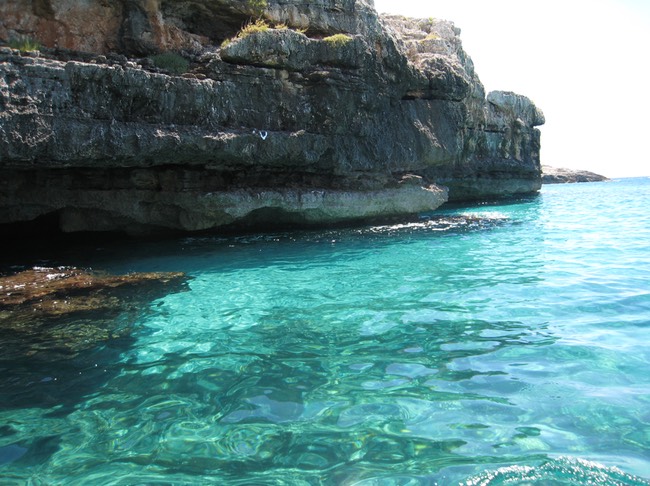
When summer arrives in Vancouver, when the brief joyous period of endless blue sky, flower-fragrant air, and green gardens takes over my consciousness, then my thoughts invariably return to the Salento. Over the years, we have made three different visits to this out-of-the-way corner of southern Italy, and have yet to grow tired of it. Between our first stay, one week of a month-long exploration of the country, and our second, four years passed. How to explain why this quiet countryside of land and sea drew us back more strongly than time spent in Tuscany, Venice, or Rome? Why did the sights feel so strangely familiar and welcoming as we drove toward the seaside villa where we would stay? Why did we feel so much as though we were coming home to a much-loved place?
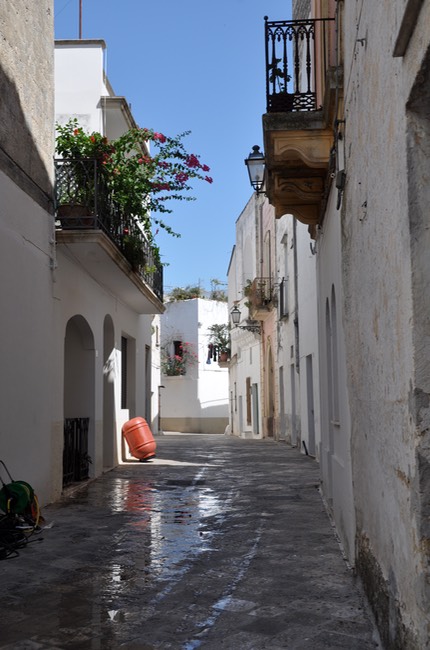
On our first visit was in June, and the place was empty. We were told that tourists only come in July and August, when Europeans typically vacation. We were charmed and occasionally frustrated by the lack of infastructure for tourists: coastlines were famed for their grottos, but there were no boat tours or rentals; in a countryside filled with grapes, we found no wineries to visit; we would swim in the morning and then set off on an expedition, only to arrive just in time to see everything close for the afternoon siesta, which in southern Italy lasts about five hours. For four years, we remembered Salento as a lovely region filled with silent, heat-parched towns.
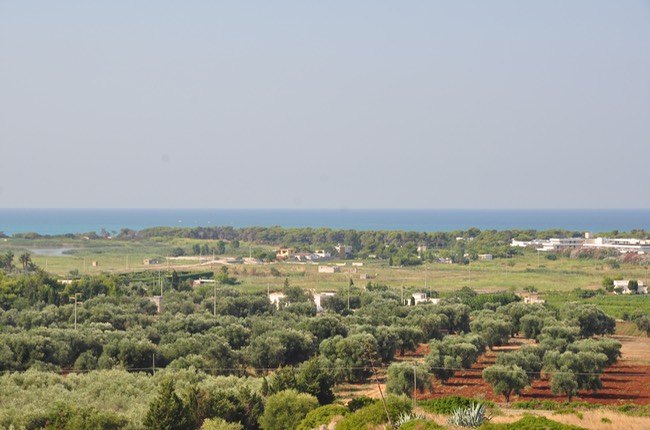
What drew us back? Part of it was the friendliness and charm of our hosts, who rented us a clean, simple little cottage on their beautiful property, and cared for our needs with unexpected warmth. Part of it was the memory of our son playing in the warm water and happily collecting shells on the beach. But it was also something different, an unexpected communion with a type of landscape that was new to us. This region is truly Mediterranean, defined by the climate which is temperate in the winter and hot and dry in the summer, with gentle sea breezes softening the effect as you move from the interior to the coast. The surrounding sea is warm, gentle, emerald; the sky above is a deep blue background for the hot summer sun; the land is made up of rust-brown gardens, silver-green olive trees, and the pale yellows and greens of Mediterranean scrub. Something in this land reached deep within our being. Of all the places we visited on that trip, this was the one that stayed with us the most vividly.
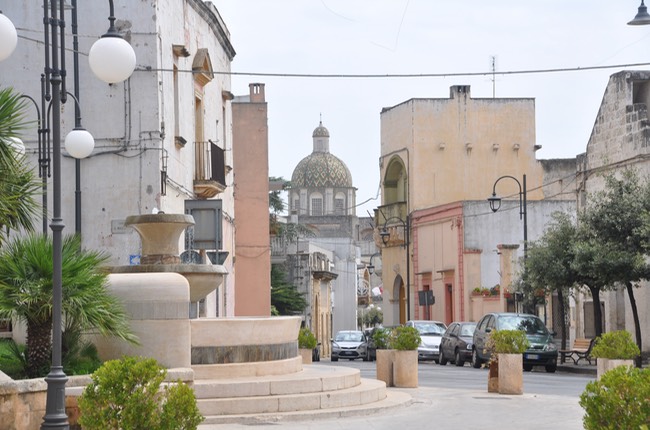
There is history in the small towns and villages, a connection to times long gone. Many cultures have gone into the building of this region, and it shows in the ancient stone buildings called caseddhi, the pre-Roman artifacts in the little museums, the Norman churches and castelli, and the baroque loveliness of Lecce.
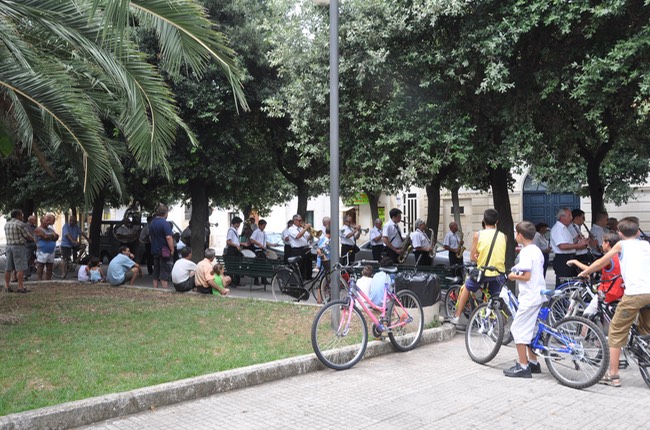
Above all, it is a place that exists for its own sake, with little catering to tourism. The beach towns have more shops and resources to deal with the influx of summer visitors, and there is a growing number of shops selling the products of local artisans; but in most respects, the people of the region carry on in their own fashion, expecting visitors to either accommodate themselves to local ways, or to simply stay on the beach (which many of them in fact do).

On the seaside, the restaurants feature large patios, and one can order all of the famous Italian specialties. Travel a few miles inland, and they are less turistico: they don’t necessarily feature pizza, they don’t always have outdoor seating, they are not all open for lunch. Gelato, ubiquitous in the smallest seaside hamlets, isn’t always available in the inland villages. However, most places have a café/bar, and there are specialty shops offering fresh pasta or delicious local cheese. Often, there is someone selling a bit of fresh produce at a small table, or off the back of a three-wheeled truck. Even the little supermercatos feature the most gorgeous produce: ripe red tomatoes, yellow peppers, huge heads of garlic, big ripe melons. And of course, there are the weekly mercati, lively and colourful.
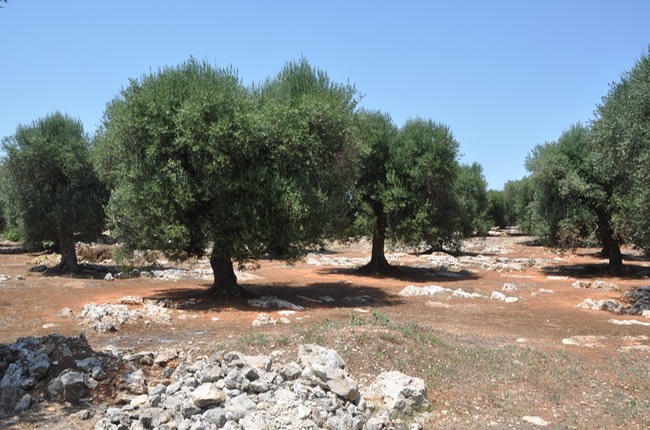
After our first visit, we carried away memories that remained as vivid as the photos we took: the pale sandy beach against the brilliant aqua sea and deep blue sky; the whiteness of Gallipoli in the bright sunlight; the rugged beauty of the coast around the southern tip of the peninsula at Leuca; the old medieval castello at the inland village of Felline, partly converted to offices, and completely accessible to casual visitors. For four years, these memories fueled our eagerness to return.

Thus it was that we completed the oddly familiar drive through the sun-baked countryside, passing scenes and towns that we recalled so well. Distances were much shorter than we had remembered, and suddenly we were there, sitting at the same ocean-side gelateria, feeling everything welcome us back with its very sameness. We drove up the dusty drive to the familiar gate, to be greeted by the barking dog and the genuine delight of our Swiss-born host, greeting us in French, “Bonjour, mes amis!” Later, we walked along the dusty country road to the beach for our first sight of the white dune sand, and the mare, the exotic emerald ocean of Salento. When I walked into the glorious warm, clear ocean, I felt a sensation of utter joy.
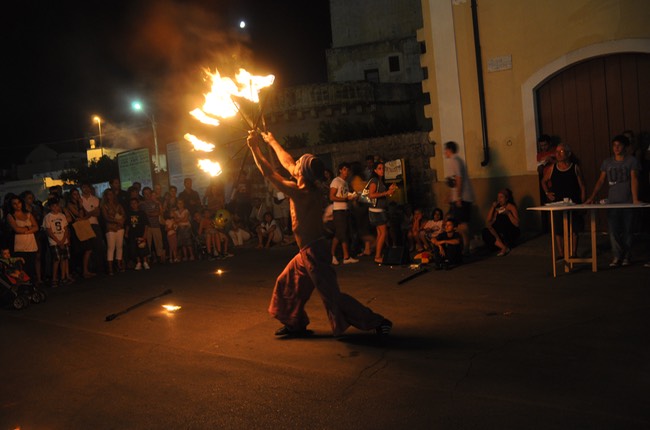
Two years later, we returned again, this time for two full weeks in the heart of the summer tourist season, and found our seaside haven transformed. It was party time in Salento, with carnival-like amusements along the waterfront at night, and inland, each small town with its sagra devoted to a regional product or recipe, really an excuse for nighttime parties away from the beach, with street entertainers, market stalls, and of course food, all soaked in the festive Salentine music called pizzica. But it was still possible to escape the crowds, during the day when the inland towns and villages were quiet with the heat of summer and the lives of their inhabitants. We drank iced cappuccinos in empty bars, browsed local markets, and drove home afterward through dusty olive groves. We ate late, as one does in the heat of a Mediterranean summer, and walked along the waterfront afterward, enjoying the festive atmosphere. We made a new set of memories to keep close until our next return, whenever that shall be.
Photos: grotto near Santa Maria di Leuca; Specchia, olives and the sea; Taurisano; marching band in Soleto; buying lemons in Torre Suda; olive grove; Torre San Giovanni waterfront; pasta festival in Felline; beach at Torre San Giovanni
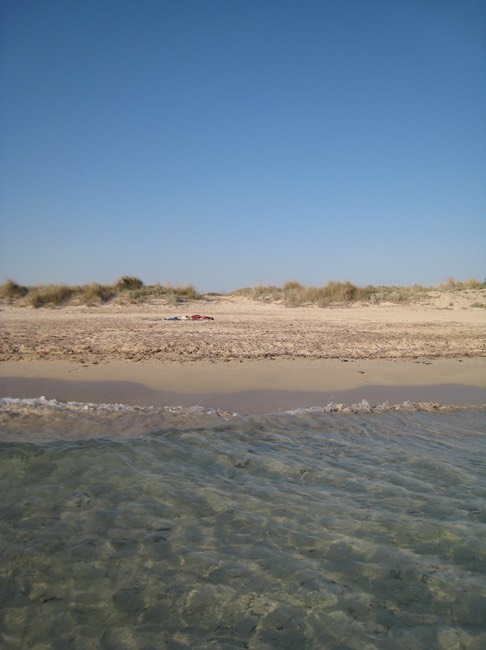
A Little Known Pocket of Italy

On a driving trip through southern Italy some years ago, we passed through the province of Basilicata. This mostly landlocked part of the peninsula is known to some for the cave-dwellings in the city of Matera, and to others for its lovely aglianico wine. We discovered wonderfully friendly people, a landscape dramatic with mountains and plains, and sights that in other regions would have been swarming with tourists. We visited the ruins of a Roman city outside Viggiano, where we were the only people wandering through the ancient streets and buildings. We visited the village of Pietrapertosa, a classic hill town with winding cobblestone streets and climbing staircases, in which the only visitors of the day were the guests at a large wedding. (Since those guests arrived in numerous high-end automobiles and some seemed to be Carabinieri, we assumed that it was a mafia wedding!)
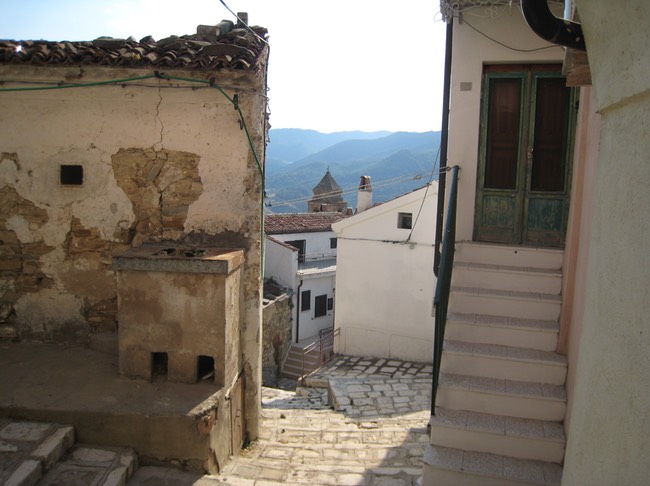
One of the highlights of the trip was our visit to the small town of Accettura. We chose this hill town because, while it had absolutely no tourist attractions, it did boast a hotel. Upon our arrival, we parked our car in the easiest available parking place and walked up through the centre of town, enjoying the absolute quiet of the sun drenched cobblestones in the mid afternoon. Imagine our shock when, upon inquiring at the hotel, we were informed by the woman in the lobby that she wasn’t sure if they had a room for us, and would have to wait until the manager returned from lunch!
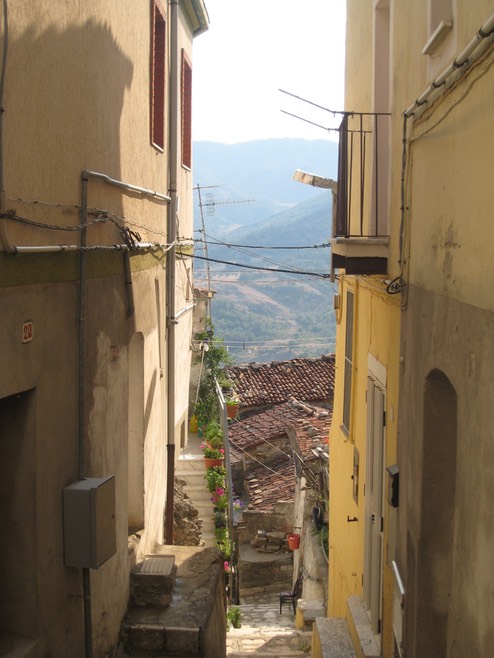
As it turned out, a large group of American-Italians were having a family reunion in the area, using Accettura as their base; fortunately for our plans, the manager of the hotel was quick to find space for us. We soon became known in the little town as the tourists who were not American, much to everyone’s surprise. And as the the American visitors spent their days and evenings elsewhere, we only encountered them in the breakfast room, and we spent a delightful pair of days watching the rhythms of the town. Not far from our hotel was the town square, the impressively-named Piazza del Popolo, which featured a café on either side– two days, two cafés.
Late in the afternoon, when the day’s work was done, the women sat out on the doorsteps, calling up and down the narrow stone streets to one another, quietly sociable. Many of the older ladies were dressed all in black, and once or twice we saw women in traditional dress: long skirts, long sleeves, kerchiefs. One signora, on discovering that we were Canadian, shared with us the information that her sister lived in Canada (Montreal, from what we could make out), and invited us into her tiny kitchen. The house was small and simple, as probably all of the houses along the street were, and we only saw the bare-bones kitchen, but we stood there together talking in our minimal Italian, drinking limoncello in small glasses, and then, with thanks, were back out in the heat of the afternoon.
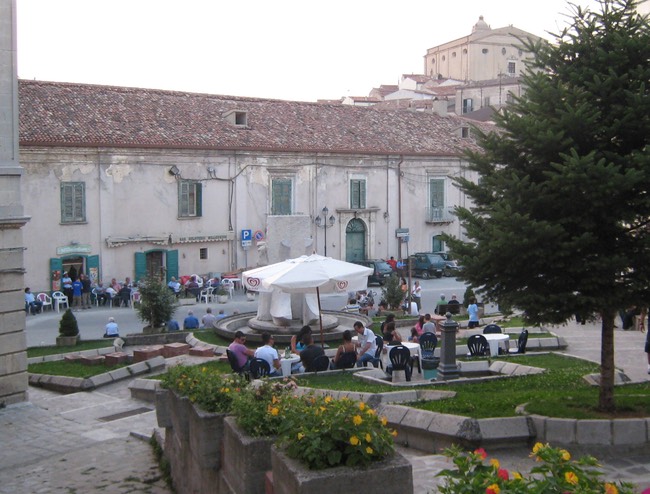
Meanwhile, the tables of the café/bar in the piazza were filled with old men. We also took up a place here, and began enjoying a slow continuum of prosecco, Fanta, fizzy water, and snacks, all of which were insanely inexpensive. We played Yahtzee, as the old men at the neighbouring table looked on with interest. As evening approached, more men began to line the piazza; young kids started to appear, to play foosball and ride bikes. Cars began to pass. By seven or so, the young adults had come out. Four young men played some lively games of foosball, a couple of younger boys kicked a ball in the street, the old men at the table next to us began playing a noisy game of cards. By eight o’clock at least half the people lining the piazza were teenagers and twenty-somethings. Activity would continue late into the evening, as we would hear motorcycles coming and going through the piazza well past midnight. By nine o’clock in the morning, the old men would be out again, after the young people had gone off to work and the woman were shopping in the alimentaria or the small mercato coperto.
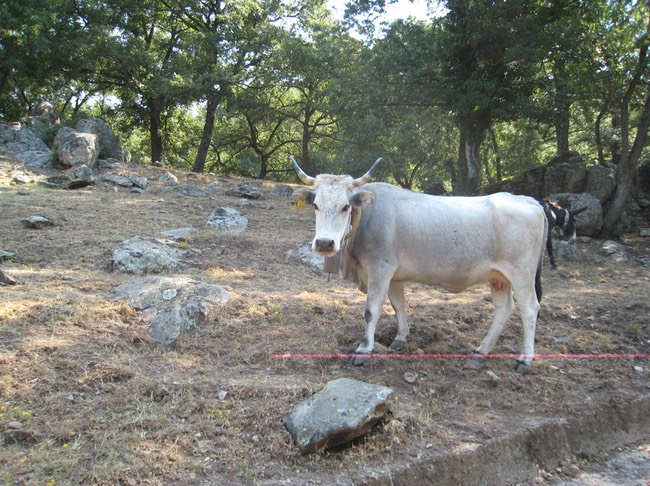
We had two gut-stuffing dinners in the trattoria at our hotel: spicy pasta dishes, creamy mushroom sauces, and absolutely huge cheese courses, nothing like the tiny, elegant platters typical of North American restaurants. We (and everyone else that we could see) drank cool red wine that was slightly sweet and frizzante, and very dark. We were absolutely stuffed with food.
The first evening, while I took our son upstairs, my husband stayed behind to determine whether we would pay immediately or upon checkout, after which he was waylaid by our host and his group of amici, who had been sitting in the next room, where there was a television. They wanted to know how tall he was (he is six-six, a giant among the Italian men), how old he was, what size his feet were, what he did for a living, and how long it took us to get here from Vancouver. They already knew that we were Canadian, and in Accettura for no particular reason. The next night, in reply to his “buonasera”, they all enthusiastically called out “Ciao!” They were clearly his buddies now.
Photos: Basilicata countryside, Accettura street views, Piazza del Popolo, water buffalo produce decadent mozzarella di bufala